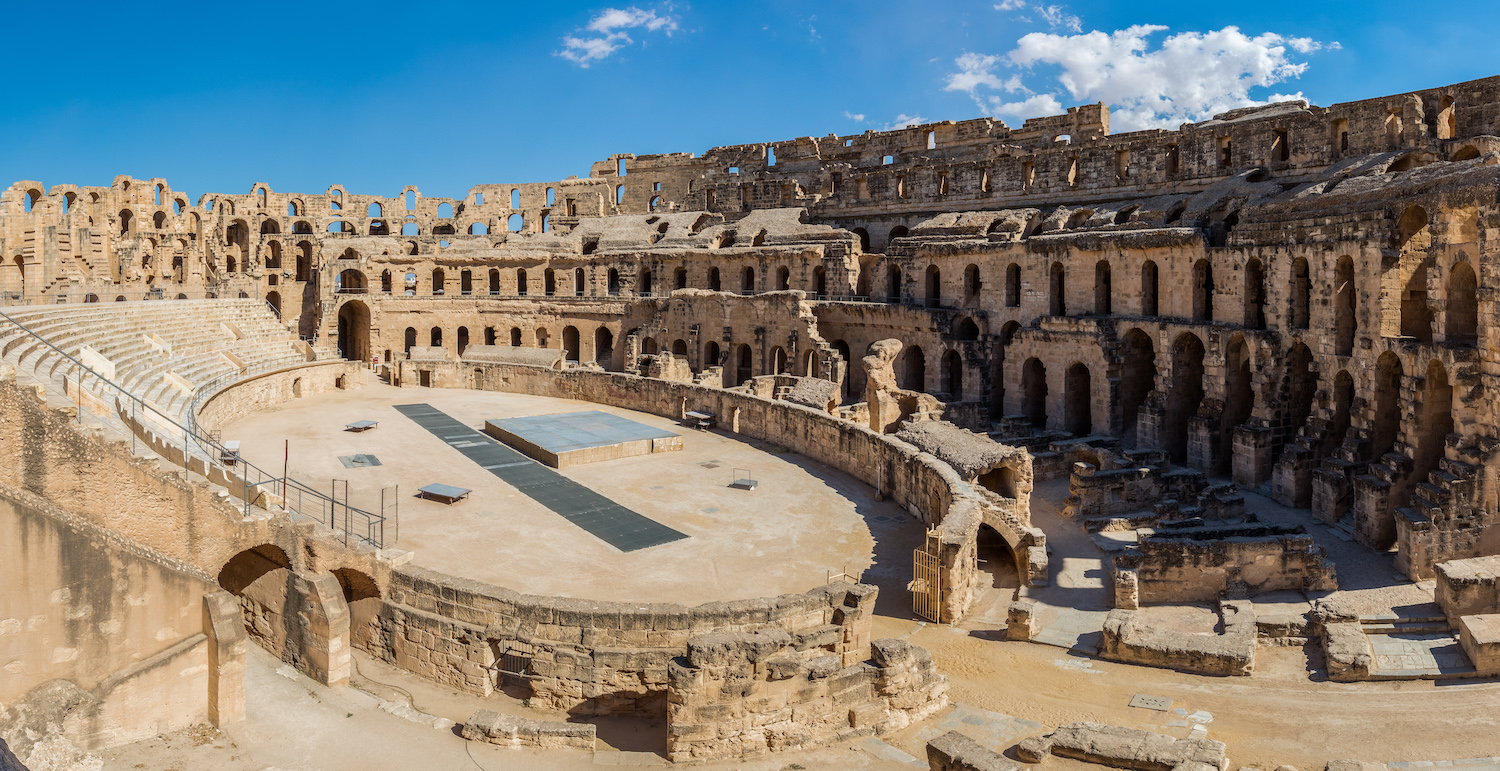
Image via Wikimedia Commons
When Rome conquered Carthage in the Third Punic War (149–146 BC), the Republic renamed the region Africa, for Afri, a word the Berbers used for local people in present-day Tunisia. (The Arabic word for the region was Ifriqiya.) Thereafter would the Roman Empire have a stronghold in North Africa: Carthage, the capital of the African Province under Julius and Augustus Caesar and their successors. The province thrived. Second only to the city of Carthage in the region, the city of Thysdrus was an important center of olive oil production and the hometown of Roman Emperor Septimius Severus, who bestowed imperial favor upon it, granting partial Roman citizenship to its inhabitants.
In 238 AD, construction began on an amphitheater in Thysdrus that would rival its largest cousins in Rome, the famed Amphitheater of El Jem. “Designed to seat a whopping crowd of 35,000 people,” writes Atlas Obscura, El Jem was listed as a UNESCO World Heritage site in 1979. Built entirely of stone blocks, the massive theater was “modeled on the Coliseum of Rome,” notes UNESCO, “without being an exact copy of the Flavian construction…. Its facade comprises three levels of arcades of Corinthian or composite style. Inside, the monument has conserved most of the supporting infrastructure for the tiered seating. The wall of the podium, the arena and the underground passages are practically intact.”

Image via Wikimedia Commons
Although the small city of El Jem hardly features on tours of the classical past, it was, in the time of the Amphitheater’s construction, a prominent site of struggle for control over the Empire. The year 238 “was particularly tumultuous,” Atlas Obscura explains, due to a “revolt by the population of Thysdrus (El Jem), who opposed the enormous taxation amounts being levied by the Emperor Maximinus’s local procurator.” A riot of 50,000 people led to the ascension of Gordian I, who ruled for 21 days during the “Year of the Six Emperors,” when “in just one year, six different people were proclaimed Emperors of Rome.”

Image via Wikimedia Commons
From such fraught beginnings, the massive stone structure of the El Jem Amphitheater went on to serve as a fortress during invasions of Vandals and Arabs in the 5th-7th centuries. A thousand years after the Islamic conquest, El Jem became a fortress during the Revolutions of Tunis. Later centuries saw the amphitheater used for saltpetre manufacture, grain storage, and market stalls.
Despite hundreds of years of human activity, in violent upheavals and everyday business, El Jem remains one of the best preserved Roman ruins in the world and one of the largest outdoor theaters ever constructed. More importantly, it marks the site of one of North Africa’s first imperial occupations, one that would designate a region — and eventually a continent with a dizzyingly diverse mix of peoples — as “African.”
via @WassilDZ
Related Content:
Explore the Ruins of Timgad, the “African Pompeii” Excavated from the Sands of Algeria
Archaeologists Discover an Ancient Roman Snack Bar in the Ruins of Pompeii
Josh Jones is a writer and musician based in Durham, NC. Follow him at @jdmagness


“The Arabic word for the region was Ifriqiya.”
There were no Arabs in north Africa in 146 BC. The Arabic name is probably derived from the Latin.